Starting your fitness journey with a personal trainer in Manhattan can feel overwhelming, especially if you’ve never worked with one before. You might wonder what actually happens during that initial session and whether you’ll be thrown into an intense workout right away.
Your first personal training session will focus on getting to know you, assessing your current fitness level, and creating a plan tailored to your specific goals rather than jumping straight into heavy exercise.
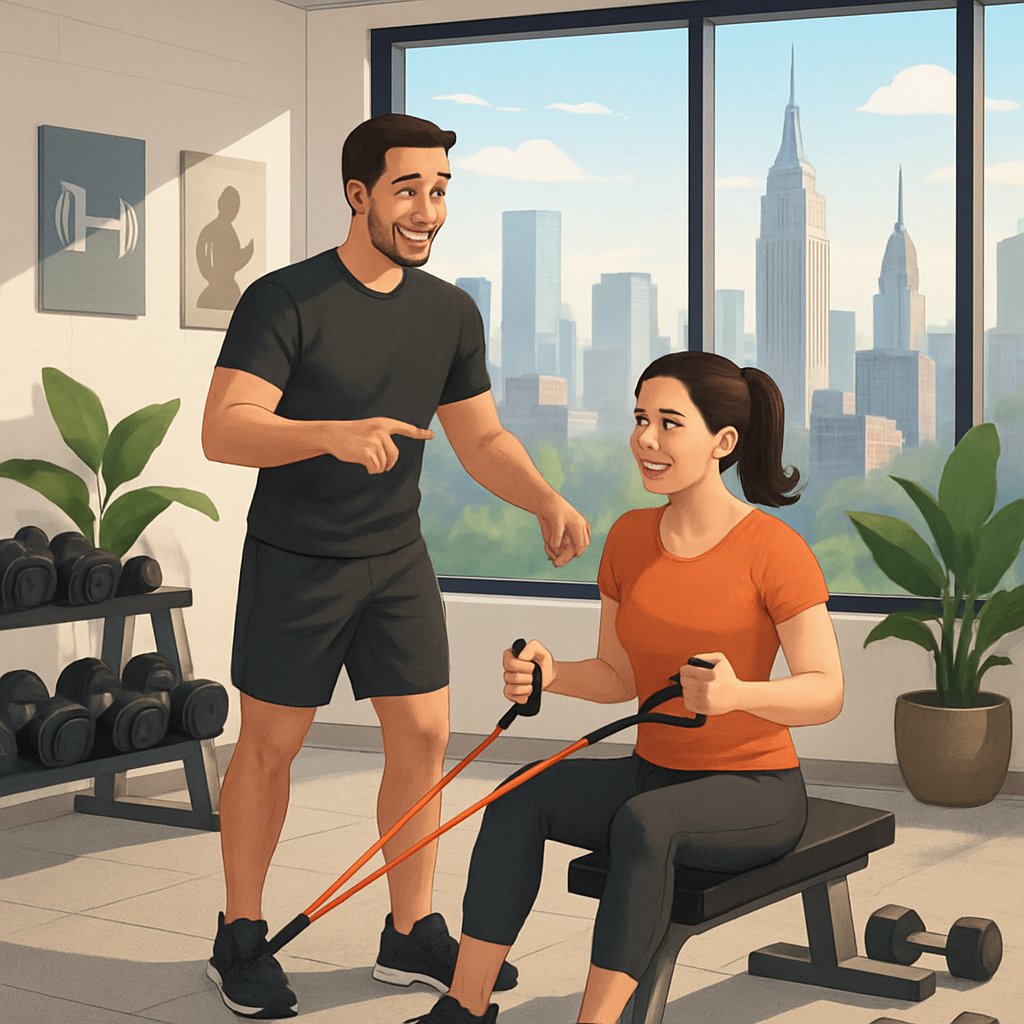
Manhattan’s busy lifestyle makes personal training an attractive option for New Yorkers who want efficient, results-driven workouts. Whether you’re in Midtown, the Upper East Side, or West Village, your trainer will understand the unique challenges of city living and help you navigate your fitness goals accordingly.
The session usually includes a chat about your health history, some movement assessments, and basic measurements to figure out your starting point.
You’ll also get a sense of what future sessions will be like, plus tips on how to set yourself up for success. Ask any questions you have about the training process—don’t hold back.
Key Takeaways
- Your trainer will assess your fitness level and discuss your goals instead of jumping into intense exercise.
- Baseline measurements and movement assessments help create a personalized workout plan.
- You’ll get guidance on preparation, expectations, and next steps.
First Steps: Introduction and Goal Setting
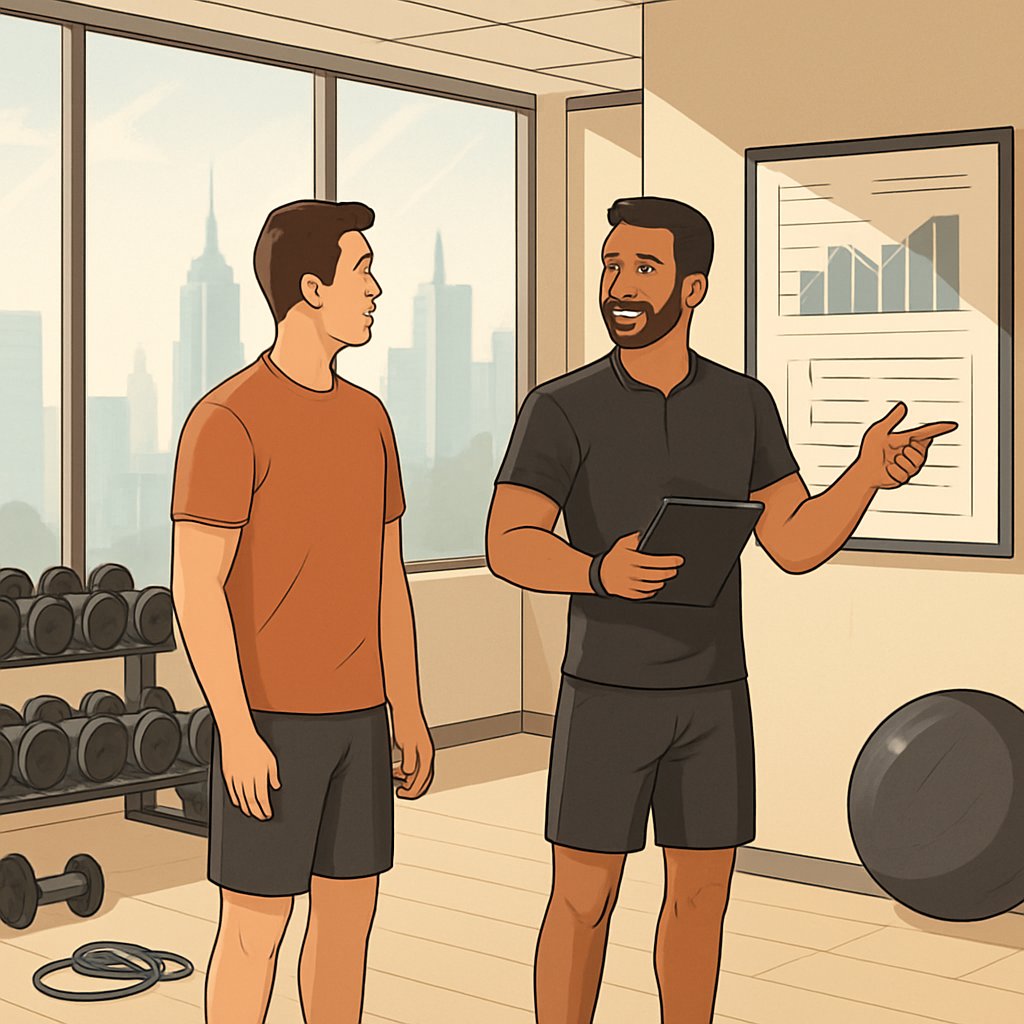
Your Manhattan personal trainer will start by getting to know you and what you want to achieve. This initial conversation covers your fitness background, current goals, and any health concerns that might affect your workouts.
Meeting Your Personal Trainer
Your trainer will introduce themselves, probably sharing their background and certifications. Many Manhattan trainers have credentials from places like ACE or similar recognized programs.
They’ll ask about your current fitness level and exercise experience. This helps them understand where you’re starting from.
Your trainer will explain their training style and approach. Some focus on strength, others on cardio, or maybe functional movement.
What to expect during introductions:
- Discussion of trainer’s experience and specialties
- Overview of their training philosophy
- Explanation of session structure and expectations
- Questions about your schedule and availability
Manhattan trainers often work with busy professionals, so they’ll ask about your work schedule and preferred training times. They want to make the plan work for you.
Discussing Your Fitness Goals
Your trainer will ask detailed questions about your goals. Common ones? Weight loss, muscle building, better endurance, or maybe training for a specific event.
Be specific about what you want. Instead of “get fit,” say something like “lose 15 pounds” or “run a 5K without stopping.”
Your trainer will help you set realistic timelines. Manhattan’s fast pace can make you want results yesterday, but real, lasting progress takes time.
Common fitness goals discussed:
- Weight loss or body composition changes
- Strength and muscle building
- Cardiovascular improvement
- Sport-specific training
- Injury prevention
They’ll also ask about your past fitness experiences—what worked, what didn’t, and what you liked or hated.
Your trainer will explain how they’ll track your progress. This might include measurements, photos, or performance benchmarks.
Reviewing Medical History and Injuries
Your trainer will ask about current and past injuries. They want to avoid exercises that could aggravate any issues.
Be honest about any pain or discomfort you’ve got. Even minor aches can turn into bigger problems if ignored.
They’ll ask about medications you’re taking. Some meds can affect your heart rate, blood pressure, or energy during exercise.
Medical info to discuss:
- Current injuries or pain
- Past surgeries or major injuries
- Chronic conditions like diabetes or heart disease
- Medications that might affect exercise
- Doctor restrictions or recommendations
Your trainer might ask you to get medical clearance before starting, especially if you’re over 40 or have health conditions.
A lot of Manhattan trainers work with clients who have desk jobs. They’ll ask about posture problems, back pain, or other issues from sitting all day.
Initial Assessments and Baseline Measurements
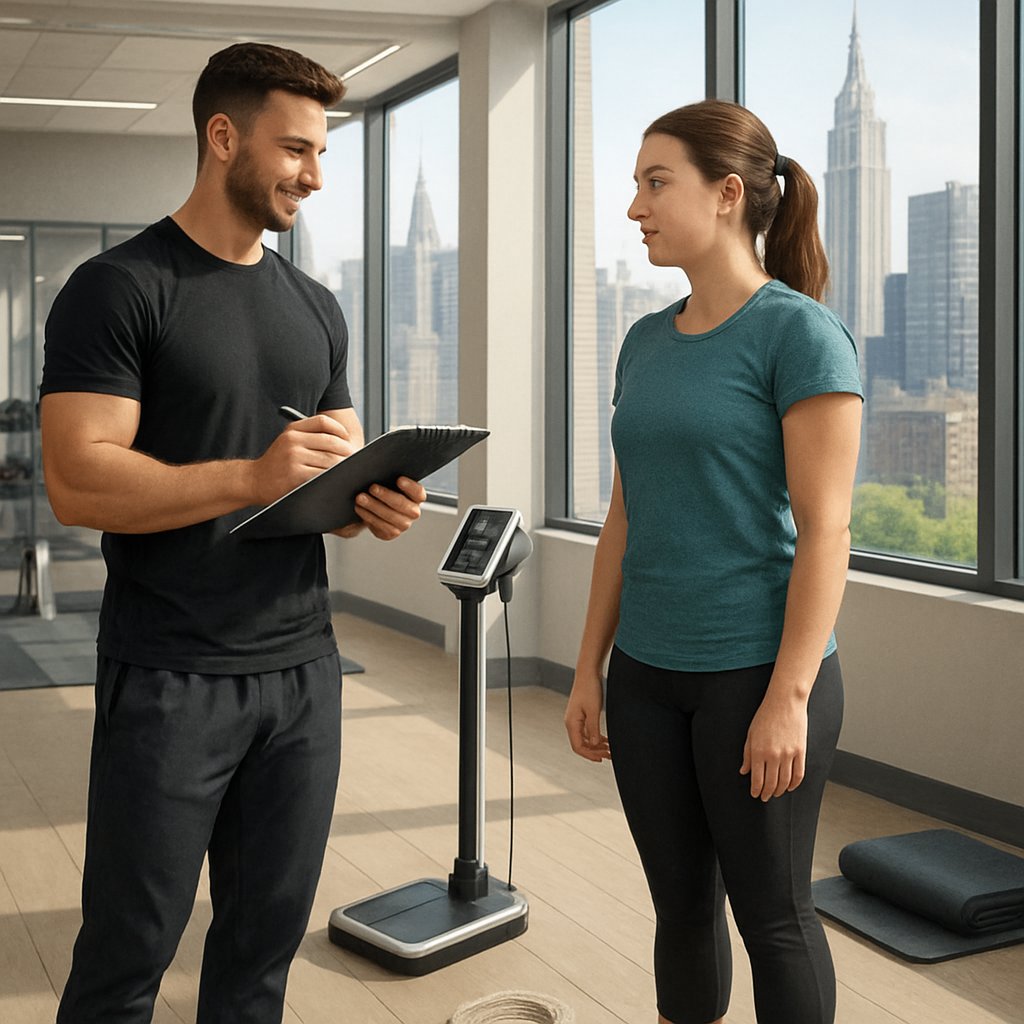
Your Manhattan personal trainer will run some assessments to get a clear picture of your fitness level. These fitness assessments usually include body composition analysis, movement screening, and strength evaluations.
Body Composition and Body Measurements
Your trainer will take some measurements to get your baseline. Body measurements like waist, hips, and arms help track your progress.
Common measurements:
- Waist circumference at the narrowest point
- Hip measurement at the widest part
- Chest, arm, and thigh circumference
- Body weight and height
Some NYC trainers use advanced tools like DEXA scans or bioelectrical impedance devices to measure body fat and muscle mass. These are more accurate than basic scales.
Your trainer will explain what each number means and how they’ll use these to track your progress.
Fitness Assessment and Movement Screening
Your trainer will check how your body moves through basic exercises. This fitness assessment helps spot muscle imbalances and movement problems.
Typical assessments:
- Overhead squat test for hip and shoulder mobility
- Push-up test for upper body strength
- Plank hold to measure core stability
- Balance tests on one foot
Manhattan trainers often pay extra attention to posture issues, especially for office workers. They’ll check for things like forward head position and rounded shoulders.
They’ll note any pain or discomfort you have during these movements so they can avoid exercises that might cause problems.
Evaluating Flexibility, Strength, and Mobility
Your trainer will test your range of motion in key joints. Poor flexibility can limit your exercise options and bump up your injury risk.
Flexibility tests might include:
- Shoulder mobility (reaching behind your back)
- Hip flexor tightness (from sitting a lot)
- Hamstring flexibility (touching your toes)
- Ankle mobility (important for squats)
Strength assessments measure what you can do right now. These might include grip strength, leg strength, or core endurance.
These evaluations help your NYC trainer target weak areas and decide which muscles need strengthening or which joints need more mobility work.
Your trainer will refer back to these measurements as you move forward.
What Happens During Your First Manhattan Personal Training Session
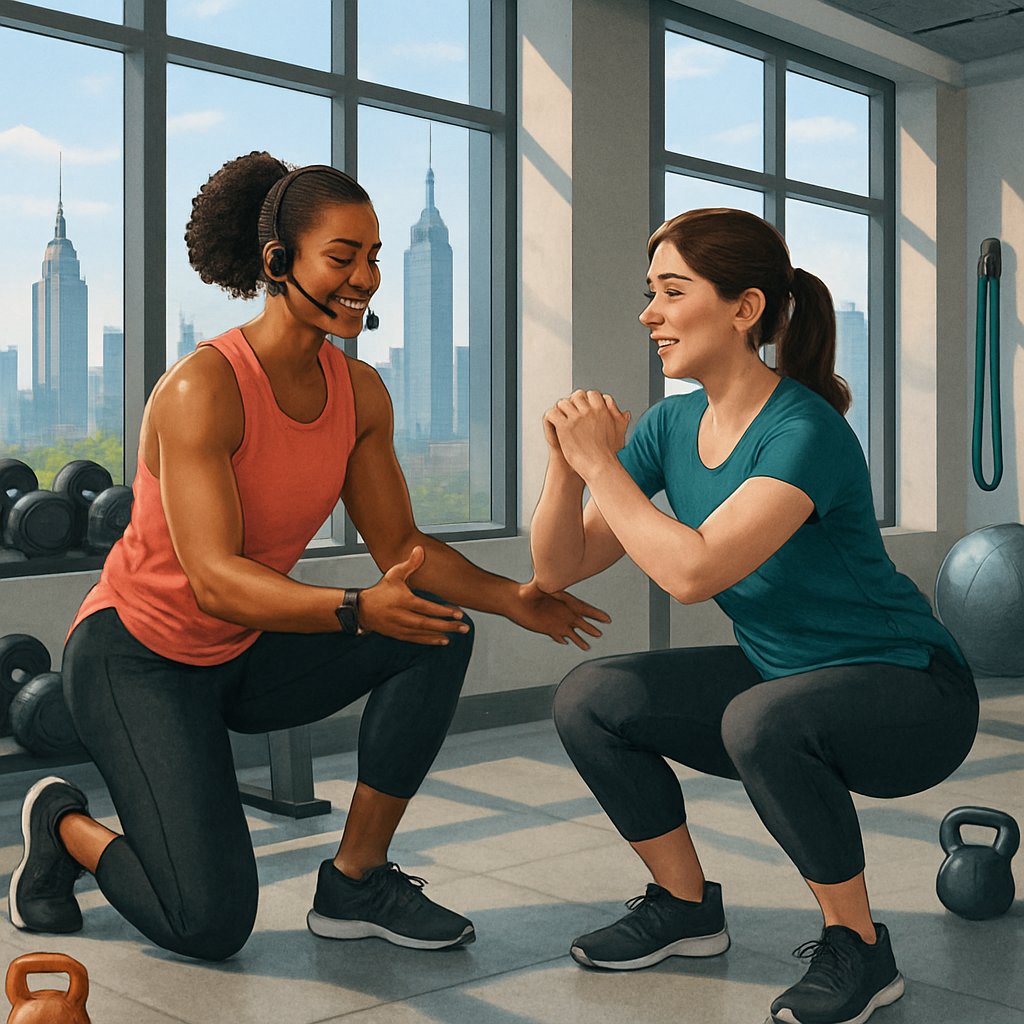
Your first personal training session is all about assessment, education, and laying the groundwork for your fitness journey. The trainer will guide you through movement prep, teach the basics, and give you feedback that’s actually useful.
Warm-Up and Mobility Preparation
Your Manhattan personal trainer will start with a 5-10 minute warm-up that fits your fitness level. Usually, this means light cardio, like marching in place or gentle stretching.
The warm-up isn’t just about getting your muscles ready. Your trainer is watching how you move and looking for any mobility issues or imbalances.
Common warm-up activities:
- Joint rotations for shoulders, hips, and ankles
- Dynamic stretches like leg swings and arm circles
- Light cardio such as walking or using a stationary bike
- Activation exercises for your core and glutes
If you feel tight or uncomfortable in certain spots, your trainer may spend extra time there. That’s totally normal—it helps prevent injury later.
Techniques for Proper Form
Learning proper form is the big focus of your first session. Your trainer will demonstrate each move slowly and clearly.
You’ll practice basic movements without weights at first. Think bodyweight squats, push-ups from your knees, or planks.
Your trainer will watch and make corrections as you go. They’ll explain why form matters and how it keeps you safe.
Key form principles:
- Breathing patterns during exercises
- Spine alignment and posture
- Joint positioning and movement
- Muscle engagement techniques
Don’t stress about getting everything perfect right away. Your trainer expects you to need some practice.
Introductory Workout Routines
Your first workout will be shorter and less intense than later sessions. Most trainers keep it to 15-20 minutes of real exercise.
The workout will focus on basic movements that use multiple muscle groups. You’ll probably do easier versions of standard exercises.
Sample first workout:
- 2-3 upper body moves (like modified push-ups, assisted rows)
- 2-3 lower body moves (chair squats, supported lunges)
- 1-2 core exercises (planks, dead bugs)
- Light cardio intervals between exercises
Your trainer will adjust the difficulty based on how you’re feeling. They’re just getting a sense of your baseline, not trying to wipe you out.
Trainer Feedback and Session Summary
At the end of the session, your trainer will chat with you about what they noticed—your movement, strengths, and areas to work on.
They’ll tell you what went well and what could use improvement. You might get suggestions for exercises to practice at home.
Summary topics:
- Your current fitness strengths and challenges
- Recommended training frequency for your goals
- Exercises to focus on next time
- Any mobility work to do between sessions
Ask any questions you have about your workout plan or next steps. If you have concerns or preferences, now’s the time to bring them up.
Preparation and Tips for a Successful Session
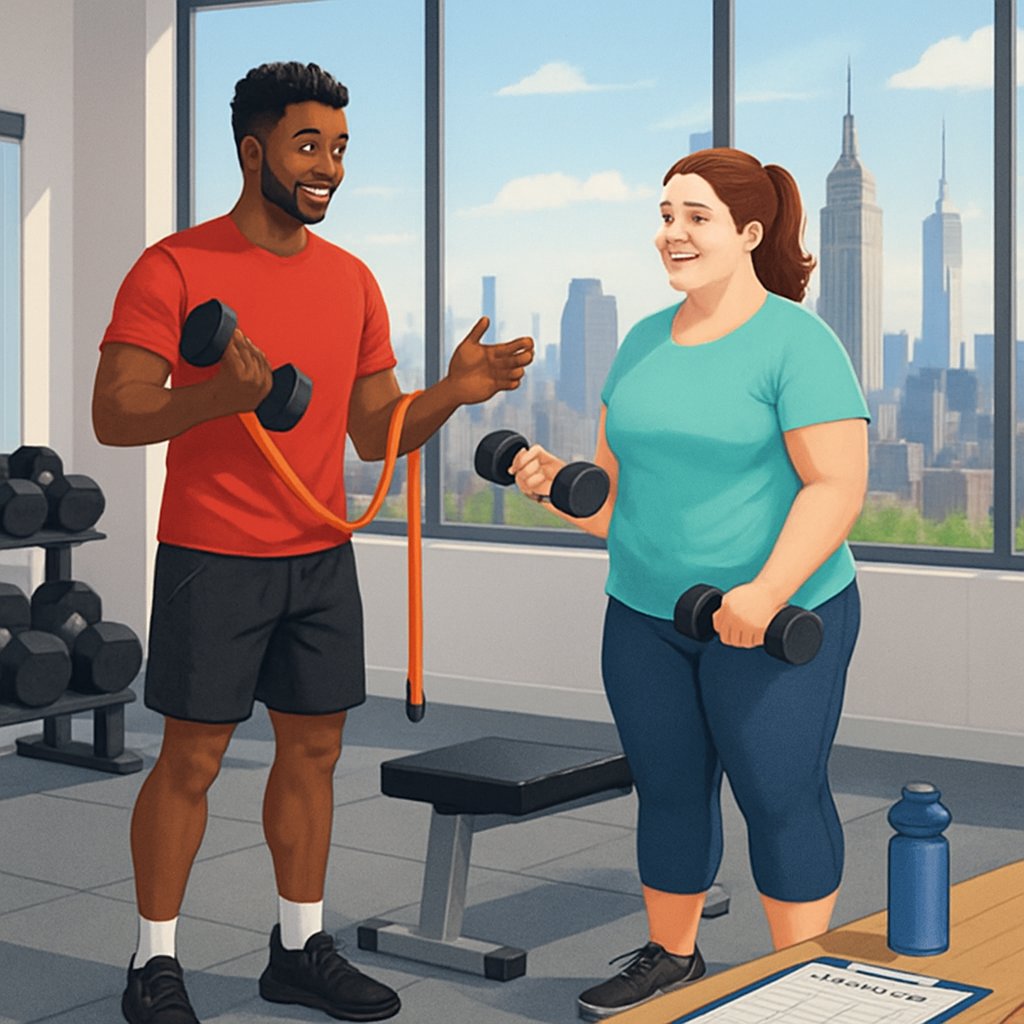
A little prep goes a long way in making your Manhattan personal training session more effective—and way more enjoyable. It’s all about bringing the essentials, thinking about your nutrition and hydration, chatting with your trainer about sleep, and setting up clear communication.
What to Bring to Your Session
Pack a water bottle to stay hydrated. Manhattan gyms can get pretty warm, especially when they’re crowded.
Bring a clean towel for wiping sweat. Some studios provide them, but having your own is always a good move.
Wear comfy workout clothes that let you move freely. Breathable fabrics that wick sweat are your friend.
Athletic shoes should give your feet solid support. Cross-trainers work great for most sessions.
Consider bringing a small notebook or your phone to track exercises. Your trainer will probably share details, but it’s nice to have your own notes.
If you need medications (like an inhaler), pack them. Always let your trainer know about any medical conditions before you start.
Pre-Session Nutrition and Hydration
Eat a light meal 2-3 hours before your session. Oatmeal with fruit or a small sandwich with lean protein works well.
Skip heavy meals within 2 hours of training. Rich or fatty foods can make your stomach feel off during exercise.
Drink water throughout the day before your session. Try to get at least 16-20 ounces in a couple hours before you work out.
Skip alcohol for at least 24 hours before training. It messes with your balance, coordination, and energy.
Avoid caffeine close to your session if you’re sensitive. Some folks love a pre-workout coffee, but if it makes you jittery, maybe skip it.
Your personal trainer will offer nutrition tips based on your goals and preferences. Be ready to talk about your usual eating habits and any restrictions.
Discussing Sleep Patterns and Recovery
Your sleep patterns play a big role in your workout performance and recovery. Most adults need 7-9 hours of solid sleep.
Track your sleep for a few nights before your session. Jot down when you go to bed, when you wake up, and how rested you feel.
Let your trainer know about any sleep issues. Poor sleep affects your energy, focus, and muscle recovery.
Recovery time between workouts varies by person and workout intensity. Your trainer will help you figure out what works best for you.
Share info about your stress levels and daily routine. High stress from city life or work can impact your training and recovery.
Be honest about your activity level, too. This helps your trainer build a program that fits your needs and recovery pace.
Communication and Setting Expectations
Your first personal training session involves goal setting. You’ll also need to set clear expectations with your trainer.
Be upfront about your fitness goals. If you want to lose some weight, build muscle, or just feel healthier, let your trainer know—details matter.
Tell your trainer about any injuries or physical limitations. If your knee sometimes acts up or you’ve got a cranky back, mention it so your personal trainer Upper East Side NYC can keep things safe and doable.
Ask how they like to train people. Some trainers are all about the weights, while others love mixing in cardio or functional movement.
Talk about what kind of timeline you’re hoping for. No one really likes quick fixes, and your trainer can help you see what’s actually realistic.
Set boundaries on what you’re comfortable with. Maybe you’re not into certain exercises, or you want to keep things at a certain intensity—just say so.
Sort out scheduling and cancellation policies right away. Manhattan personal trainers juggle a lot, so knowing these rules early saves everyone headaches.
Frequently Asked Questions
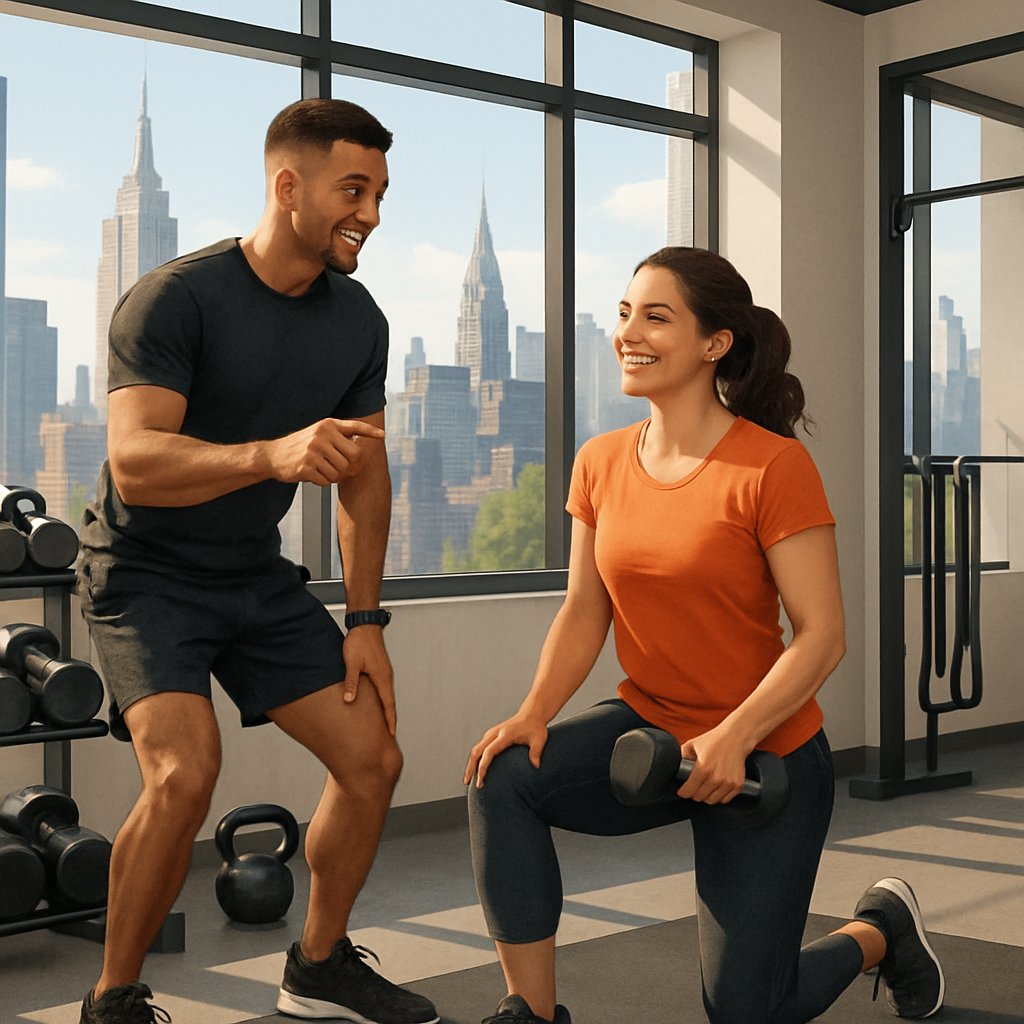
Most new clients have a bunch of questions before jumping into fitness with a Manhattan personal trainer. Here are some common ones that pop up about getting ready, what to expect, and what to bring.
How should one prepare for their initial personal training session?
Fill out any health forms or questionnaires your trainer sends ahead of time. It’ll save you both time and give your trainer a heads-up on your history.
Try to get a solid night’s sleep before your session. Your body will thank you during the workout.
Eat something light a couple of hours before you go. Heavy meals can make you feel sluggish or uncomfortable when you start moving.
Show up about 10-15 minutes early. Manhattan gyms can be pretty hectic, so that extra time helps you settle in and find your way around.
What should a newcomer expect from a personal trainer during their first visit?
Your trainer will ask a bunch of questions about your health and fitness background. They want to know about any injuries or issues you’re dealing with.
Most first sessions last between 45 and 60 minutes. That includes chatting, assessments, and maybe a light workout.
They’ll walk you through their approach and training style. You’ll also get the rundown on gym rules and safety stuff, especially at Manhattan locations.
You’ll talk about what you want out of training, both short-term and long-term. Your trainer will ask what motivates you and what you’re hoping to accomplish.
Which essential items are recommended to bring along to your first personal training appointment?
Wear comfy workout clothes you can move in. Breathable fabrics are a good call since Manhattan gyms can get pretty warm.
Bring a pair of supportive athletic shoes with decent grip. You’ll probably be moving around a lot, even during assessments.
Pack a water bottle. Sure, most gyms have fountains, but it’s just easier to have your own.
Toss a small towel in your bag for sweat. Some places hand them out, but it’s always good to check first.
What are the typical activities involved in a first session with a personal trainer?
Your trainer will check your movement and posture with a basic assessment. They’re looking for muscle imbalances or anything that needs extra attention.
Expect a few simple exercises like squats, lunges, or push-ups. Your trainer will watch your form and get a sense of your strength.
You might do a bit of cardio, like walking on a treadmill or some step-ups. This helps your trainer see where your endurance is at.
They’ll show you how to do exercises the right way. You’ll also get a quick lesson on using any gym equipment safely.
How can a beginner set realistic fitness goals with a personal trainer?
Start with goals you can actually measure. Instead of saying “get fit,” maybe aim to “walk up subway stairs without getting winded.”
Pick short-term goals you can hit in four to six weeks. Hitting those little milestones feels good and keeps you going.
Be honest about your schedule. Manhattan life is busy, so your goals need to fit the time you actually have.
Think about your past experience with exercise. Your trainer will help you set expectations that make sense for where you’re starting.
What kind of assessment can a client anticipate in their first personal training meeting?
Your trainer will check your basic movement patterns with some simple exercises. They’ll watch how you squat, reach overhead, and balance—nothing too wild.
Body composition measurements might pop up, like weight, body fat percentage, or just a tape measure for circumference. It’s really just to get a starting point, so don’t stress.
Flexibility and mobility tests come next. Your trainer might see how far you can reach or how much your joints can rotate.
Strength assessments usually involve bodyweight moves or light weights. Trainers want to see what you can do right now, without pushing you too hard.
